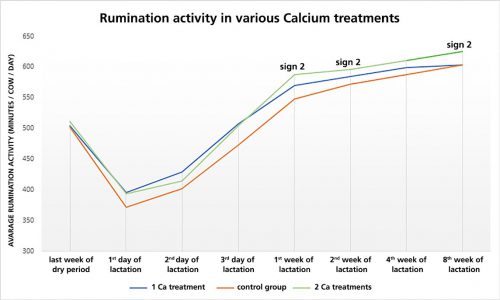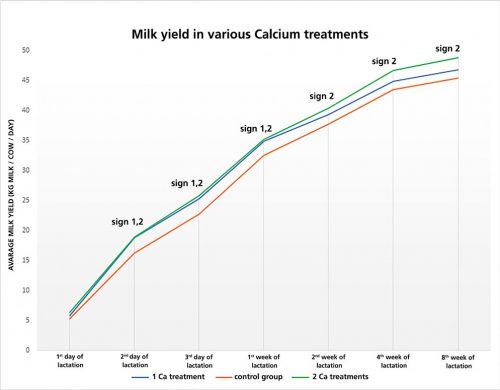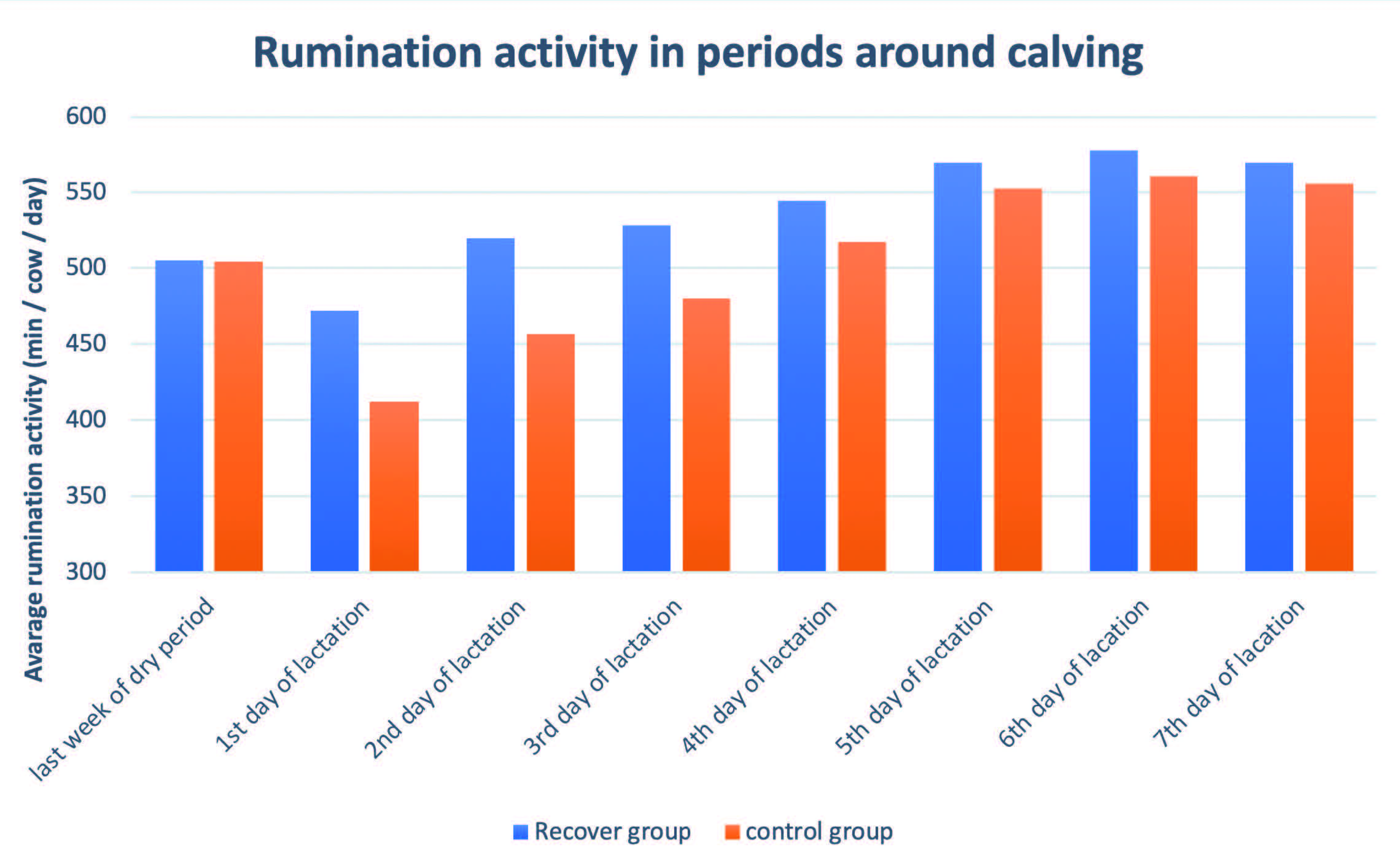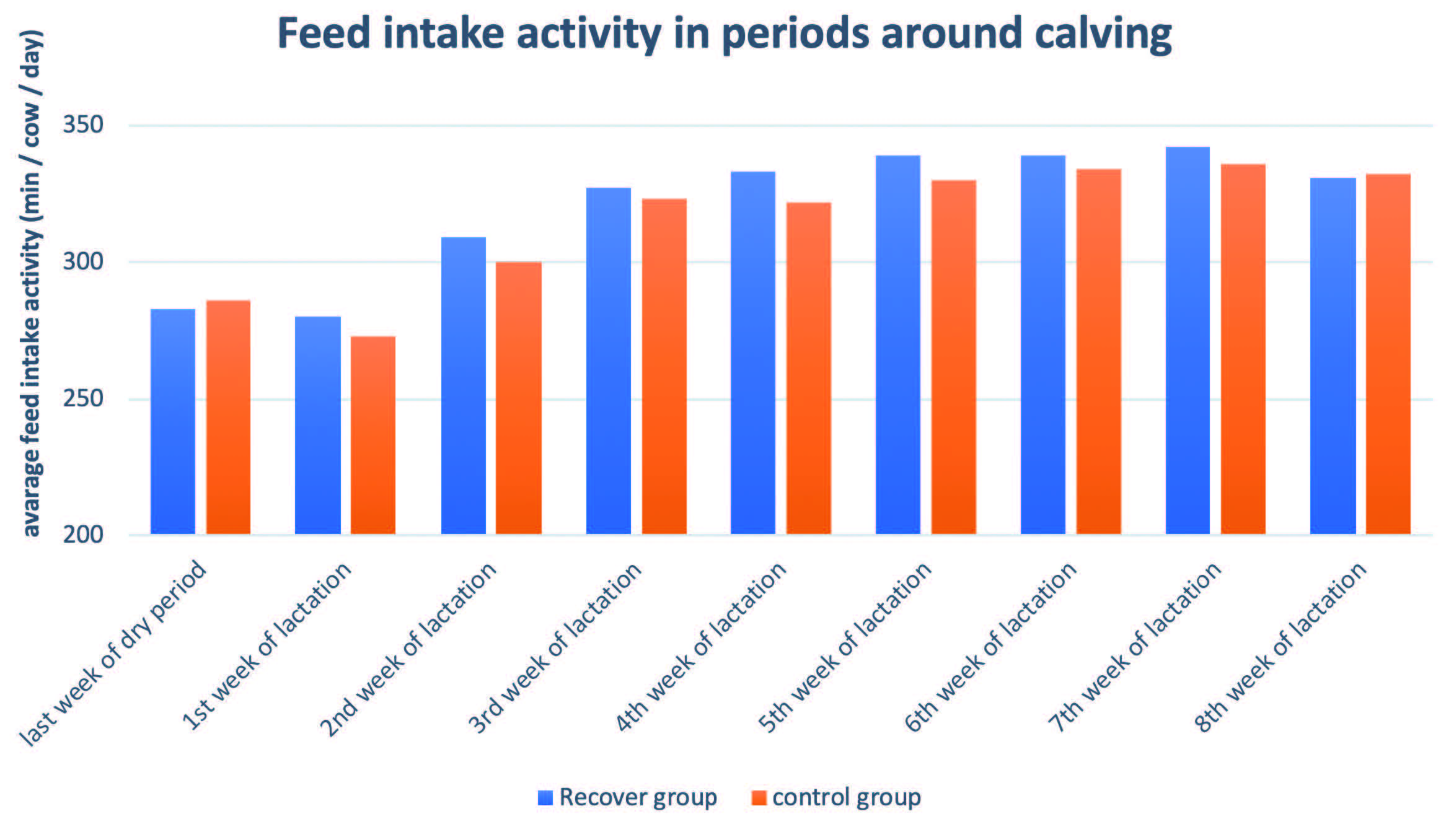Tester & försök
Sveriges Lantbruksuniversitet i Uppsala rekommenderar Juvelit-micro!
Gunnar Pettersson, tidigare försöksledare, säger att man efter ca 1 års tester föredrar att använda Juvelit-micro till sina robotar då det visat sig att spenkonditionen, som alltid varit utmärkt på Kungsängen, blivit ännu bättre med Juvelit-micro!
Fältstudie Topro Caciumbolus
It is important for Topro Animal Health and our partners that we support the Topro products with results of field trials. We know the products work from practice use, but what do we actually measure? The aim of this trial is to measure the effect of preventive treatment with Topro Calcium boluses on health and milk yield of dairy cows. The question arose because subclinical milk fever is still a common problem in cows around the calving.
Research method: 141 dairy cows participated in the study (1 control and 2 test groups). The study was conducted on 9 different dairy farms in Gelderland and Overijssel, The Netherlands.
The dairy farmers were using automatic milking systems and the control and test groups experienced the same conditions on the individual farms. The test group-1 received 1 treatment, 1 day before calving. Test group-2 received 2 treatments, 1 day before and 1 day after calving (1 treatment = 2 boluses = 40 g pure calcium). This study focused in particular on rumination activity and milk production in cows around calving. Topro Calcium bolus Research in collaboration with Aeres University of Applied Sciences Dronten conducted by Karin Kamphuis, September 2021 – January 2022
The line graphs show the rumination activity and milk yield during the study period, with data from the last week of the dry period up to and including the 8th week of lactation. It becomes visible that the rumination activity of the two test groups is higher than the control group during the entire test period. These differences are significantly measured in test group-2 from 1st, 2nd and 8th week of lactation compared to the control group. Milk production shows significant differences in the 2nd day up until the 1st week of lactation for both test groups compared to the control group. After the 2nd week the test groups do split and from the 2nd week to the 8th week of lactation, only test group-2 shows significant differences compared to the control group (P ≤ 0.05).
Topro Calcium Bolus results


Topro Calcium bolus conclusion
According to this field study, it can be concluded that preventive treatment with Topro Calcium boluses has a positive influence on rumination activity and milk production of dairy cows. An additional calcium treatment shows significantly better results than a single treatment from the 1st week of lactation. We can conclude that by giving a 2nd calcium treatment reduces subclinical milk fever and the cow will feel fitter, which increases rumination activity (and thus feed intake) resulting in a higher milk production. Applicating a double treatment of calcium is very profitable. Nr: TPOL001-22 sign 1,2 = significant differences between test group-1 and control group and between test group-2 and control group (P ≤ 0.05). sign 2 = significant differences between test group-2 and control group (P ≤ 0.05).
Fältstudie Topro Dry Bolus – Sintidsbolus
The aim of this trial is to measure the repeated effects (of trial TP0L001-21) of preventive treatments with a Topro Dry bolus on the health and milk yield of dairy cows. The previous trial showed good results, but can this be measured and confirmed again?
Research method
110 dairy cows participated in the study (57 in the test group and 53 in the control group) at 8 dairy farms in Gelderland and Overijssel, The Netherlands. These dairy farms did not participate in the previous field trial. The dairy farmers were using automatic milking systems. The test group received 1 Topro Dry bolus on the first day of the dry period.
The results show that the feed intake activity in the Dry bolus group is higher in the period from the 1st day up until the 8th week of lactation compared to the control group. In the 4th week of lactation, this difference is measured significantly*. Rumination activity shows significant differences* in favor of the Dry bolus during the dry period and during the 1st and 2nd day of lactation. The cows in the Dry bolus group have a higher milk production during the entire study period than the cows in the control group. During the 2nd and 4th week of lactation, the milk production measured significantly* compared to the control group.
Topro Dry bolus conclusion
This research has repeatedly shown that the Topro Dry bolus significantly increases the feed intake activity and rumination activity. In this study we can conclude that the Topro Dry bolus leads to a higher milk yield in the critical weeks of lactation. It is plausible that a higher feed intake and rumination activity leads to higher milk production. More feed intake, on the other hand, has a positive effect on the cow’s energy supply, which can reduce the risk of transition diseases (such as milk fever and subclinical milk fever). Optimalization of feed intake in the first weeks of lactation is very important for a good start of the dairy cow. This will ultimately also contribute to a longer lifespan. * ANOVA test P ≤ 0,05



Topro Recover Smart drink in practice
Research in collaboration with Van Hall Larenstein (University of Applied Sciences),
executed by Lisa Miskotte, february – july 2022
For Topro Animal Health and our partners it is crucial to support our Topro products with research in practice. From practical experience on the farm we know that our products are effective, but what do we actually measure?
Research method
In this trial, 102 dairy cows participated, of which 51 were assigned to the control group (no Recover), and the other 51 animals to the test group (with Recover). The study was performed on 7 different dairy farms in the Dutch provinces of Gelderland and Overijssel. All farms applied robotic milking. The cows in the test group received Topro Recover through voluntary intake, immediately after calving.
The study revealed that 93% of the cows in the test group fully drank the Recover smart drink on offer. The cows that did not drink all the Recover did not have access to the drink in the first 15 minutes after calving. From day 1 until day 7 in lactation, rumination activity was higher in cows that ingested all the Recover offered compared to the cows in the control group. On days 2 and 3, the difference was statistically significant*. Also, a trend in feed intake activity was seen: In the first 7 weeks in milk, the cows in the Recover group tended to spend more time eating than the cows in the control group.
No consistent differences in milk yield were seen in the first weeks, but from the fourth week in lactation the cows that received Recover produced more milk than the control animals. The difference amounts to 1.5 kg of milk per cow per day from the sixth week in lactation.
*ANOVA-toets P ≤ 0,05
Topro Recover conclusions
This research shows that Topro Recover not only is very palatable, but it also results in more rumination activity in the first week after calving, and increased feed intake and milk yield up to the eighth week in lactation. It can be concluded that Topro Recover leads to a statistically significant increase in rumination activity, and an increase in feed intake activity and milk yield. A higher feed intake positively affects the energy supply, thereby decreasing the risk of transition diseases (like ketosis).
Topro Recover, therefore, contributes to a better lactation start after calving. This benefits cow health and milk yield, and will eventually contribute to a longer productive lifespan of the dairy cow.



